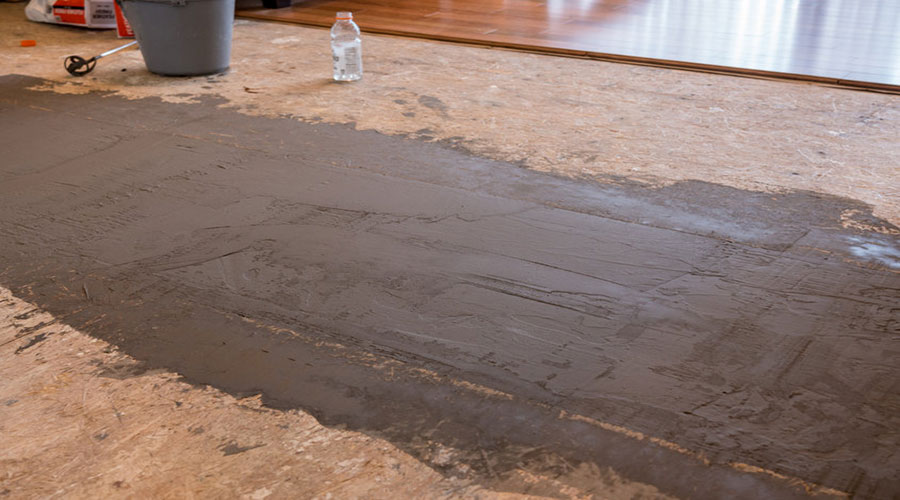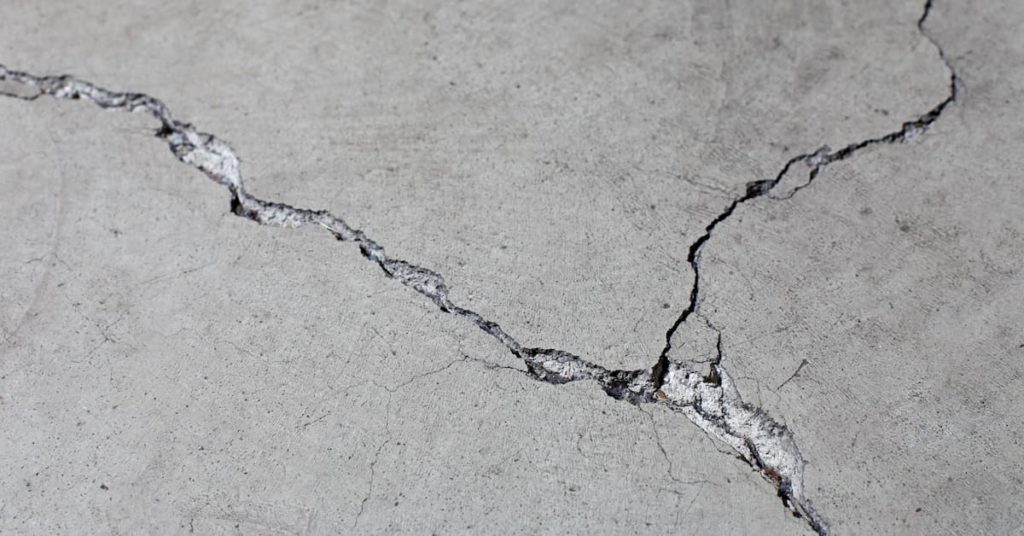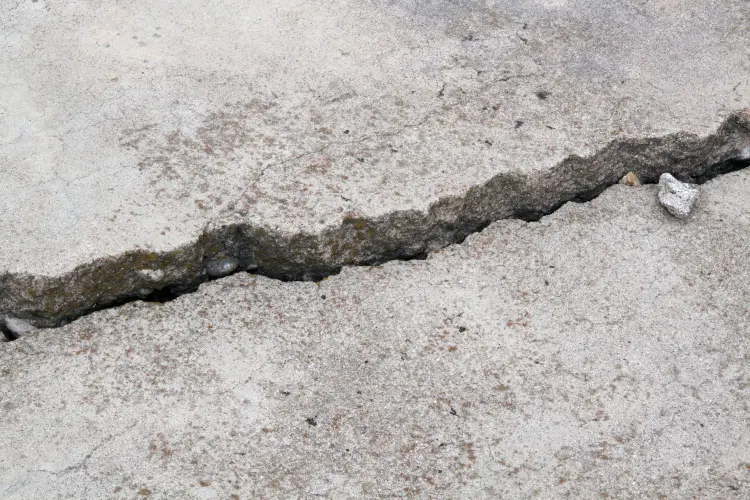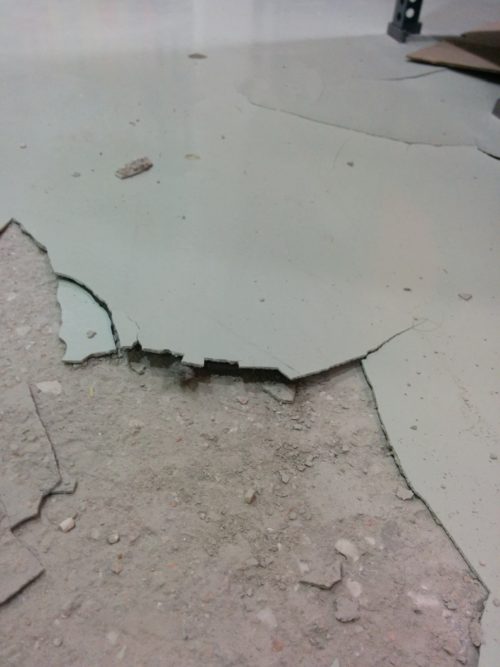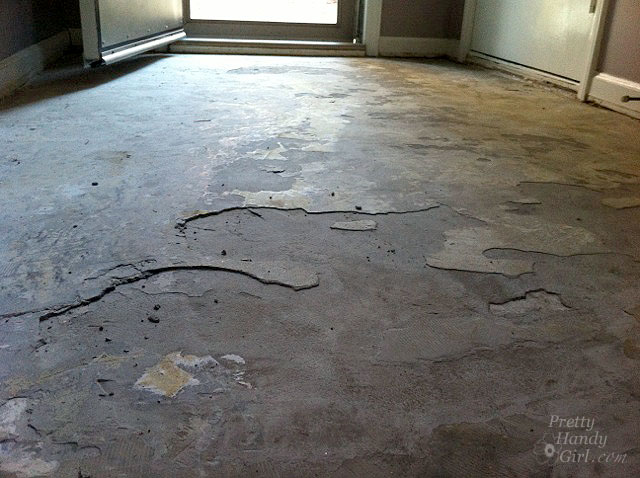Identifying the Problem: Uneven Concrete Floors
Uneven concrete floors can be a common issue in homes and commercial spaces, causing tripping hazards and affecting the overall aesthetics of the area. If you’ve noticed uneven patches, cracks, or dips in your concrete floor, it’s crucial to address the problem promptly. Understanding the potential causes behind uneven concrete floors can help you determine the most effective solution.
Assessing the Causes of Unevenness
Before embarking on any repairs, it’s essential to assess the causes of the unevenness in your concrete floor. One of the main culprits is settling or shifting of the soil beneath the concrete slab, which can lead to depressions or cracks on the surface. Another possible cause is poor initial installation, where the concrete was not properly leveled during the pouring process. Additionally, water damage, heavy loads, or natural wear and tear over time can contribute to unevenness.
Self-Leveling Concrete Overlay
One effective method to fix uneven concrete floors is by using a self-leveling concrete overlay. This innovative solution involves applying a special mix of self-leveling concrete on the existing floor surface. The self-leveling properties of the mix allow it to flow and settle into the low areas, creating a smooth and even surface. Before applying the overlay, it’s crucial to clean the floor thoroughly and repair any major cracks or damages. The self-leveling concrete is then poured and spread evenly across the floor using specialized tools.
Grinding and Resurfacing
For more extensive unevenness or damaged concrete floors, grinding and resurfacing can be an effective solution. This process involves using a concrete grinder to remove the high spots and level the floor. Once the grinding is complete, a fresh layer of concrete or a concrete resurfacer is applied to the entire surface. This resurfacing layer not only evens out the floor but also provides a new, smooth finish. Grinding and resurfacing are ideal for concrete floors with significant unevenness or those that have been subjected to heavy wear over time.
Mudjacking for Sunken Concrete
If the unevenness in your concrete floor is caused by soil settlement or sinking, mudjacking can be a suitable remedy. Mudjacking, also known as slab jacking or concrete lifting, involves injecting a specialized cement slurry beneath the sunken concrete slab. As the slurry expands, it lifts the concrete to its original level, eliminating unevenness and creating a stable foundation. Mudjacking is a cost-effective and non-intrusive solution, as it requires small holes to be drilled into the concrete for the injection process.
Prevention and Regular Maintenance
Once you’ve successfully fixed your uneven concrete floor, it’s essential to take preventive measures and practice regular maintenance to avoid future issues. Properly prepare the ground and provide adequate support before pouring new concrete to prevent settling in the future. Regularly inspect your concrete floor for any signs of cracks or unevenness and address them promptly to avoid further damage.

Repairing uneven expansion joints properly. Concrete Floor Solutions, Inc.
Ways to Fix Uneven Subfloor or Concrete Slabs – Home Inspection
How To Repair Uneven Concrete Crossroads Foundation Repair
Avoid Safety Hazards: Fix Cracked, Uneven Concrete Now
How to Level Uneven Concrete Sub-Floor for Tile or Laminate Flooring
How To Repair a Trip Hazard
How To Level Concrete Slabs Family Handyman
Applying epoxy on rough concrete – 3 useful tips
Leveling Uneven Concrete Floor Ground Up Foundation Repair
How to Fix Uneven Concrete Flooring AAA Concrete Raising
How to Patch and Level a Concrete Subfloor – Pretty Handy Girl
How can I prepare uneven concrete basement floor for vinyl planks
Related Posts:
- High Gloss Concrete Floor Sealer
- Concrete Floor Finishes
- Tinted Concrete Floors
- Concrete Floor Refinishing DIY
- Concrete Floor For Garage
- Concrete Floor Cleaning Tips
- DIY Concrete Floor Paint
- Gray Concrete Floor Paint
- Concrete Floor Cleaning Solution
- Redo Concrete Floors
How To Fix Concrete Floor Uneven
Uneven concrete floors are a common problem for both homeowners and commercial property owners. If you’re dealing with an uneven concrete floor, you may be wondering how to fix it. Luckily, there are a few simple and affordable ways to level out your concrete floor.
Sub-Heading 1: Grind Down the Floor
The quickest and most effective way to fix an uneven concrete floor is to grind it down and level it out. A concrete grinder can be used to grind down the entire surface of the floor, which should take care of any major dips or bumps in the floor. This method is fairly labor intensive, as it requires you to move the grinder around the entire area until all of the highs and lows are evened out.
Sub-Heading 2: Use a Self-Leveling Compound
Another option for fixing an uneven concrete floor is to use a self-leveling compound. This type of compound is designed specifically for leveling out concrete floors, and can be easily applied with a trowel or squeegee. The compound will fill in any gaps or low spots in the floor, creating a smooth and level surface. After the compound has been applied, it should be left to dry for at least 24 hours before any furniture or other items are placed on top of it.
Sub-Heading 3: Apply a Concrete Patch
If the unevenness of your concrete floor is limited to a smaller area, you may be able to use a concrete patch to fix it. Simply mix up some patching material according to the instructions on the package, apply it to the affected area, and allow it to dry completely before walking on it or placing furniture on top of it. It’s important to make sure that the patch is as level as possible before it dries.
Sub-Heading 4: Common Questions & Answers
Q: How do I know if my concrete floor is uneven?
A: The best way to tell if your concrete floor is uneven is by using a straight edge and checking for any high or low spots. If there are any noticeable dips or bumps in the floor, then it’s likely that you have an uneven concrete floor that needs to be fixed.
Q: Can I just use cement to fix my uneven concrete floor?
A: While it is possible to use cement to fix an uneven concrete floor, this method usually takes longer than other methods and may not produce the desired results. For best results, we recommend using a self-leveling compound or grinding down the entire surface of the floor.

